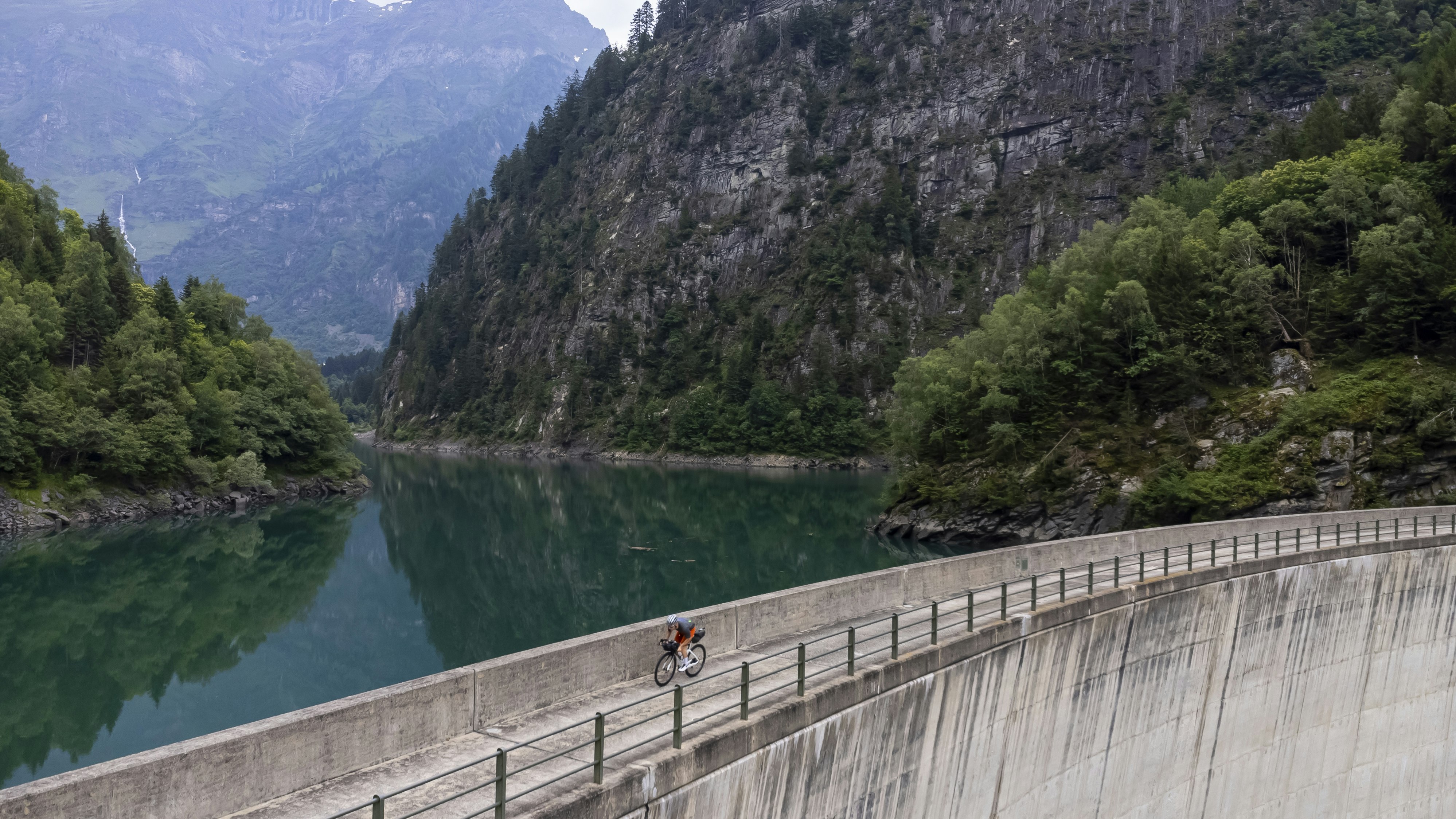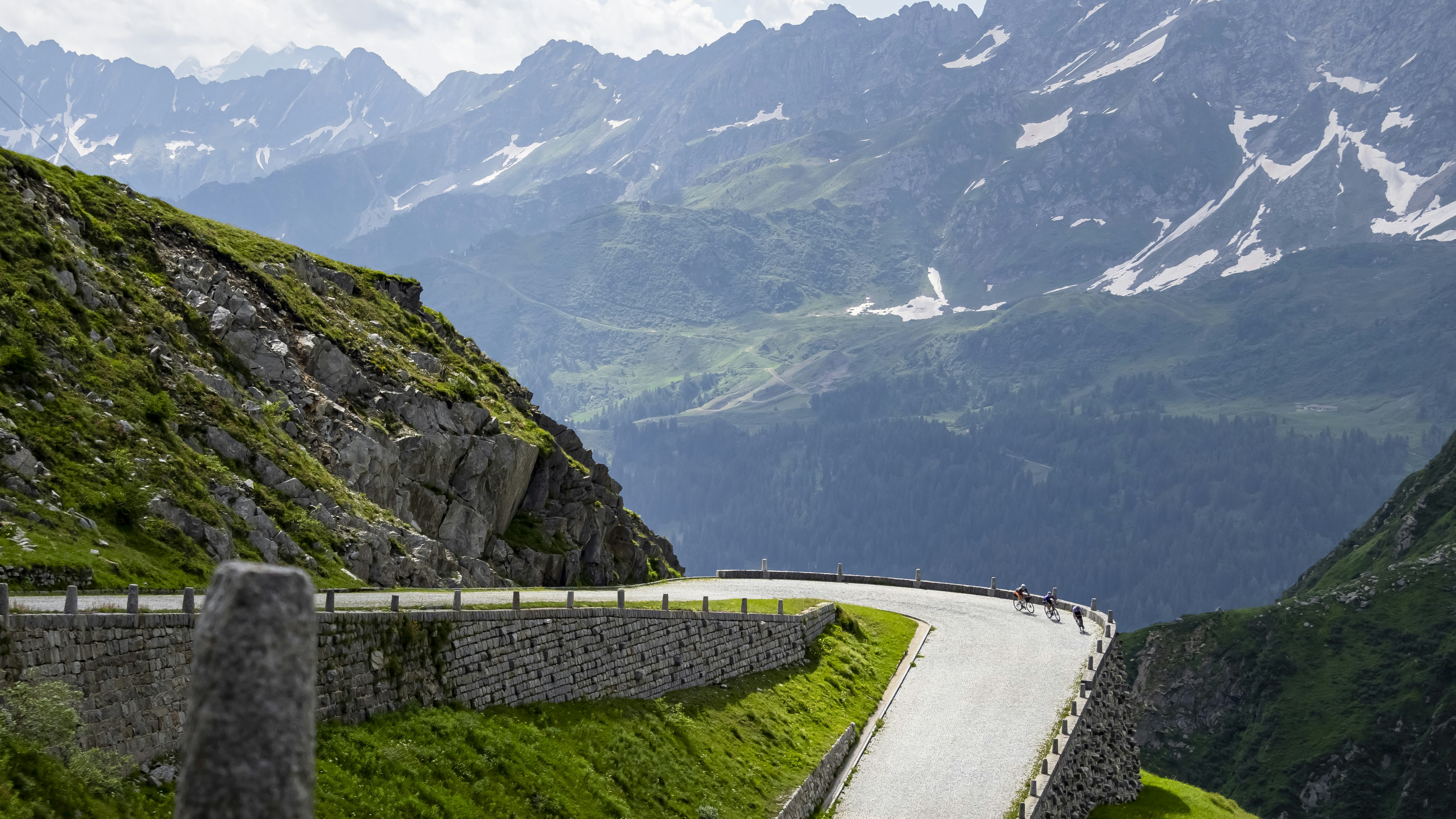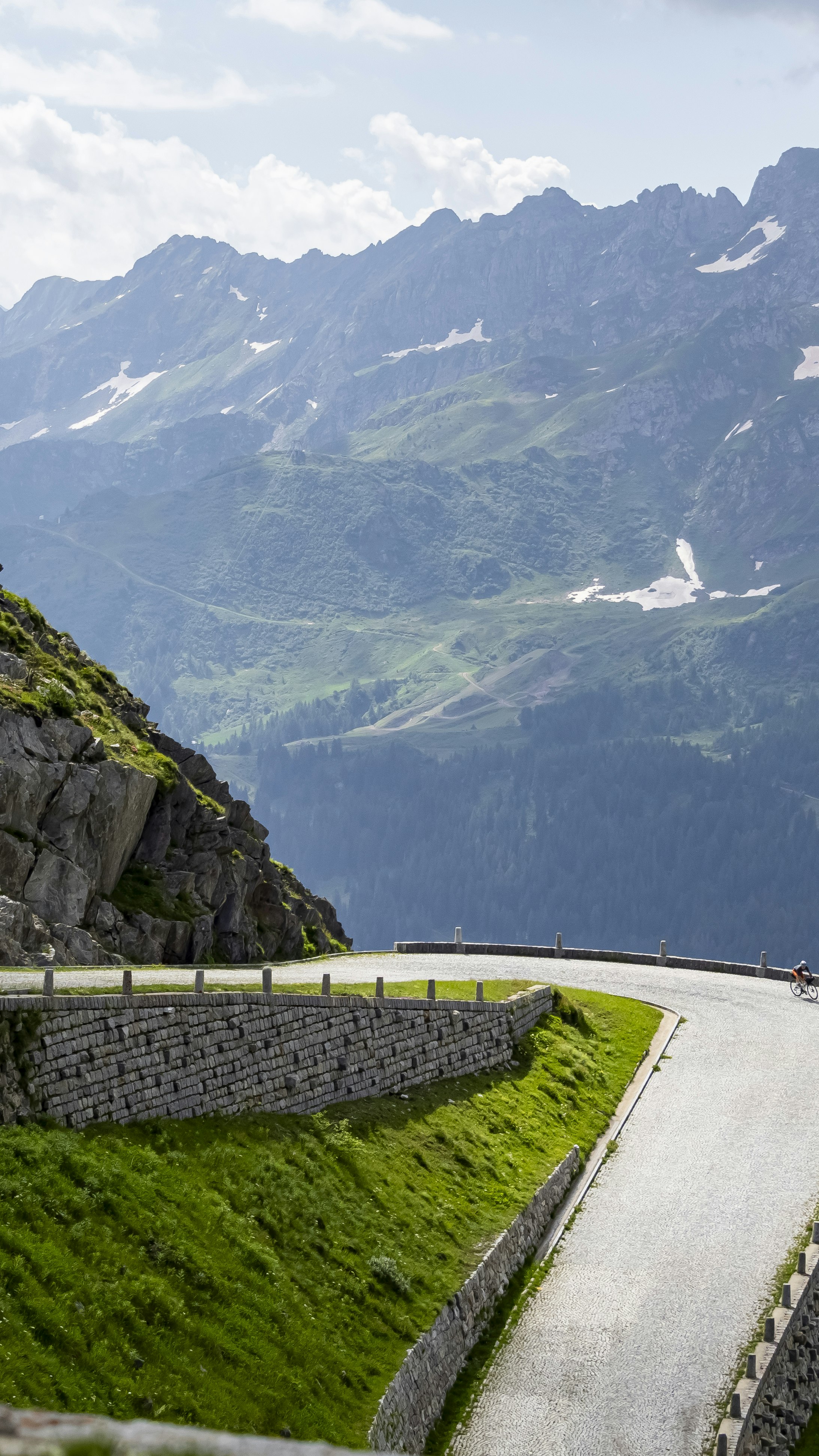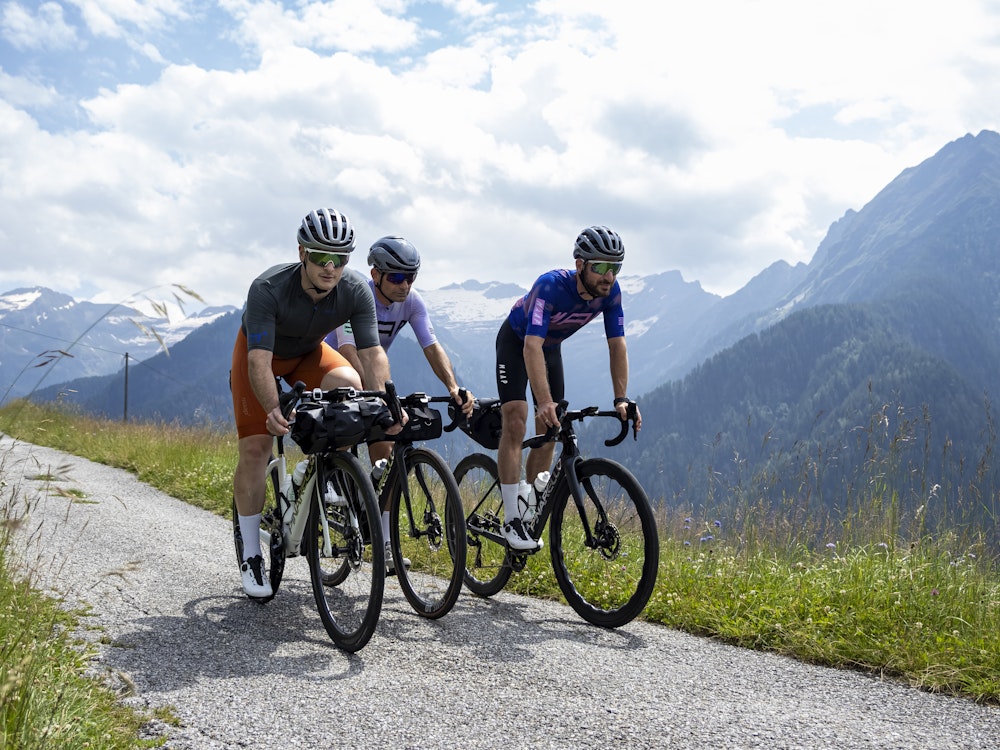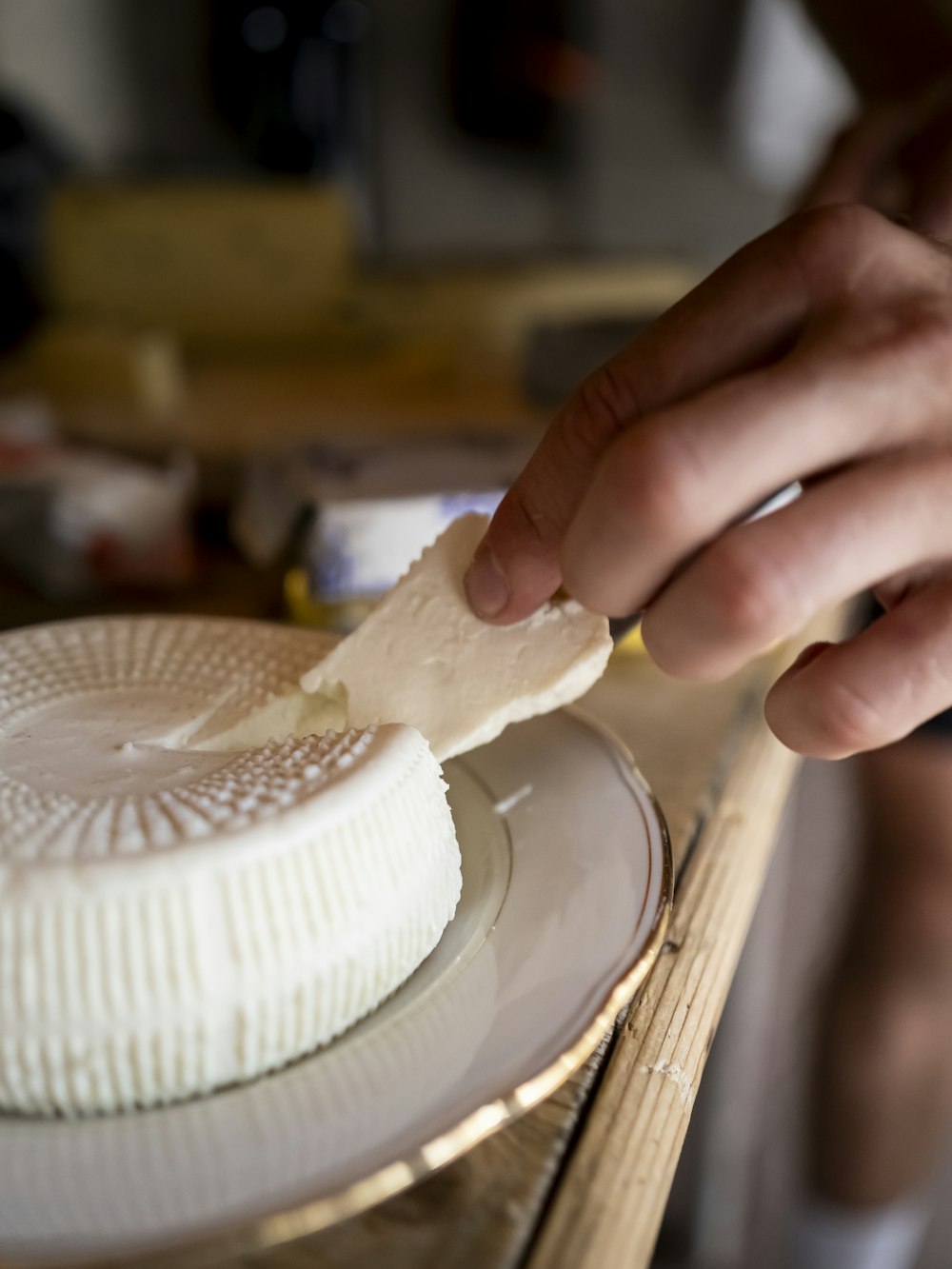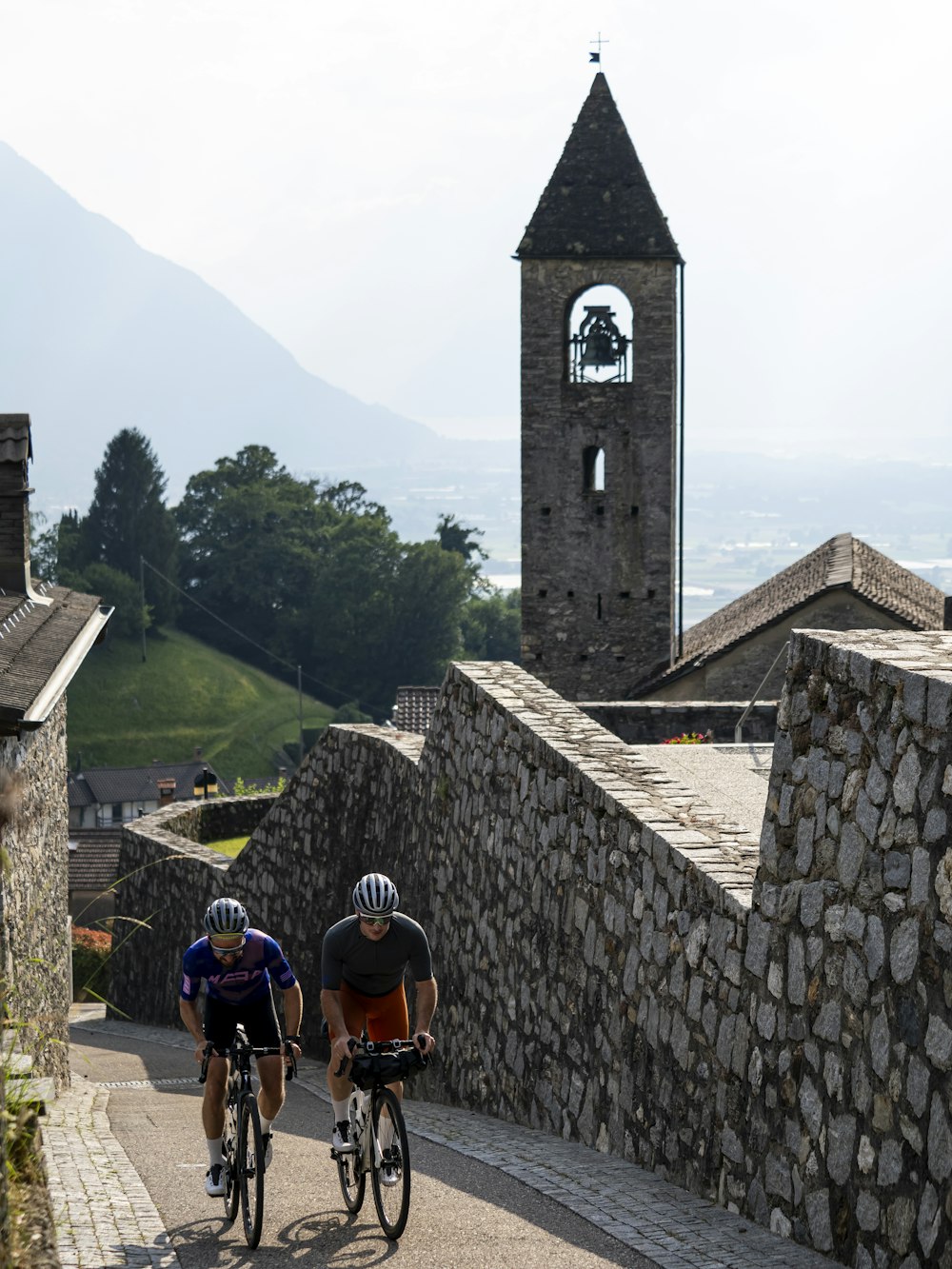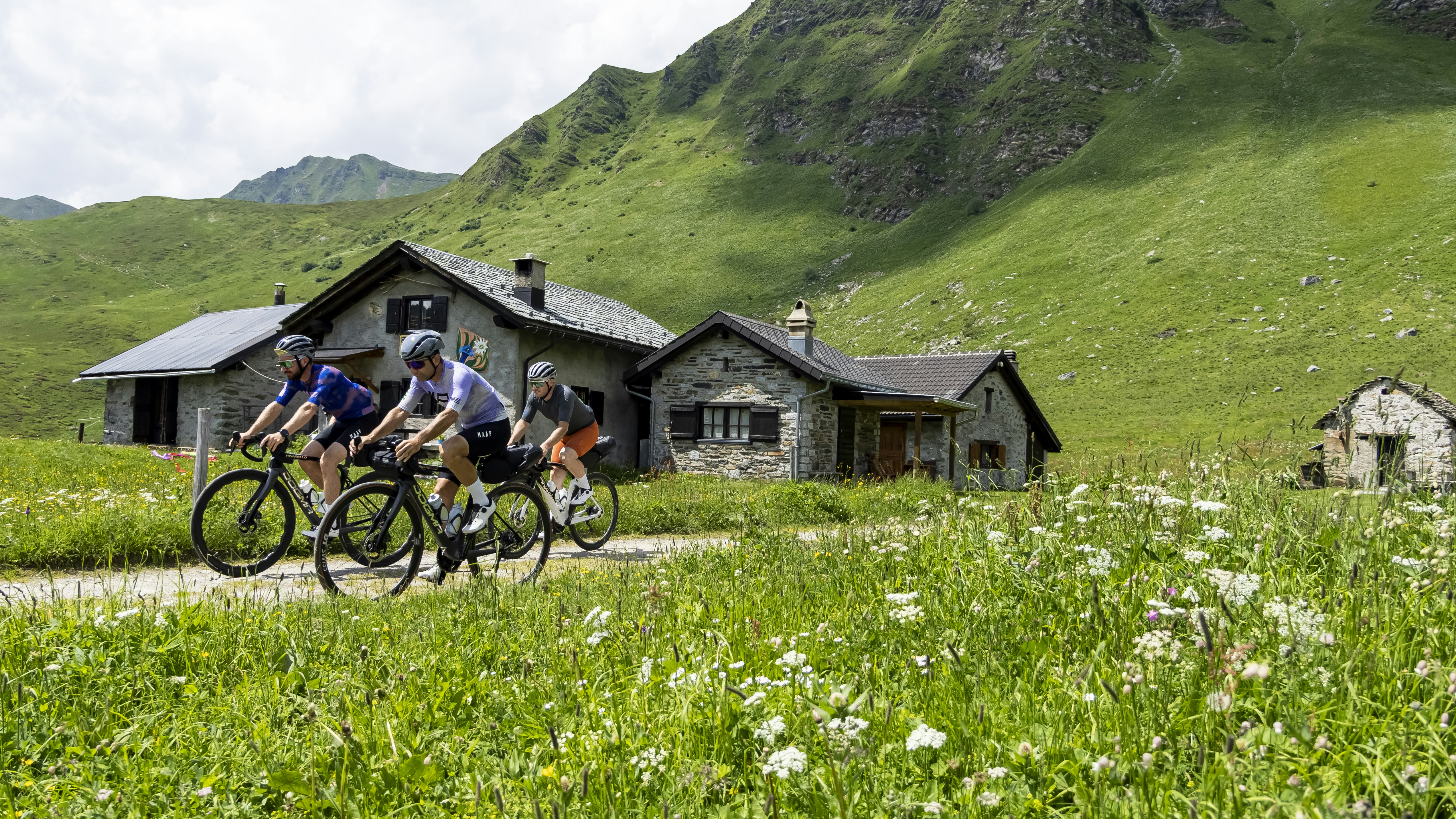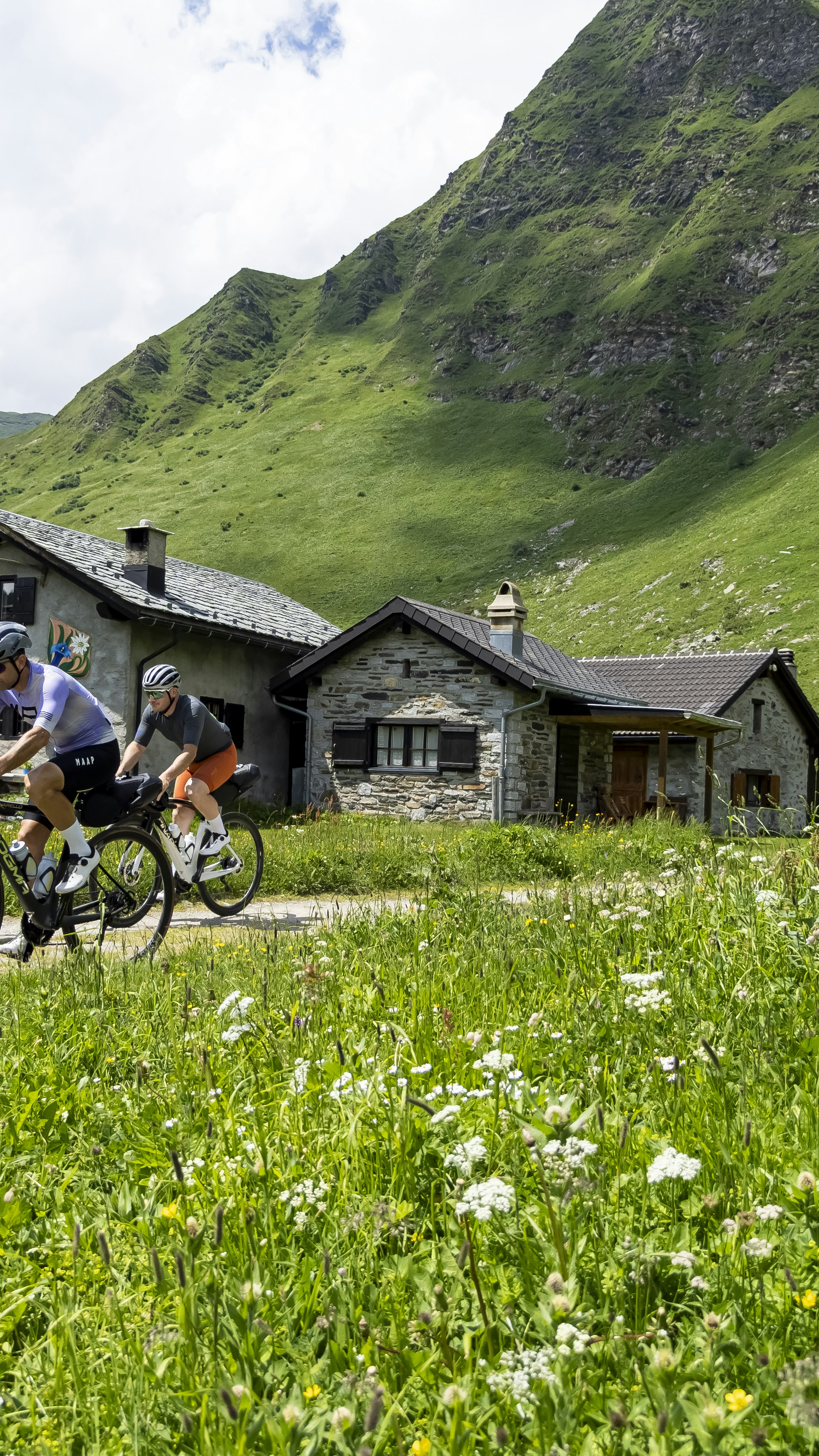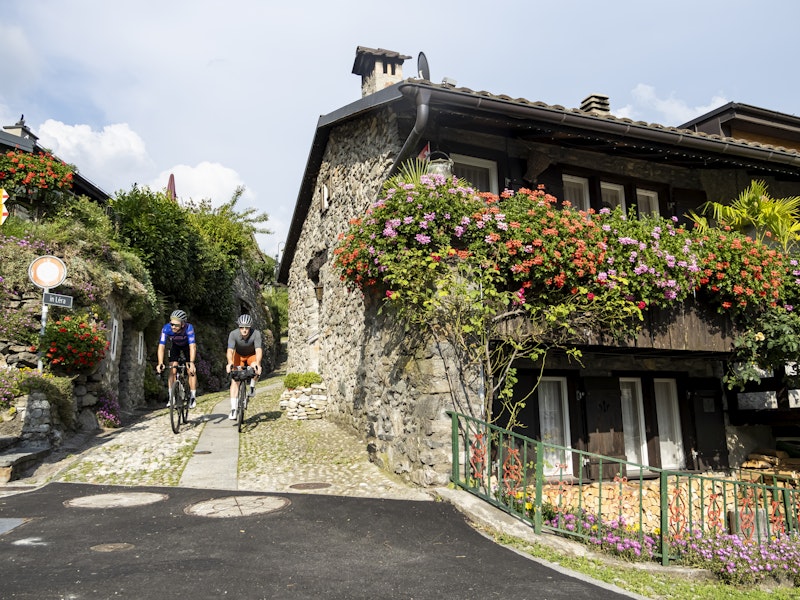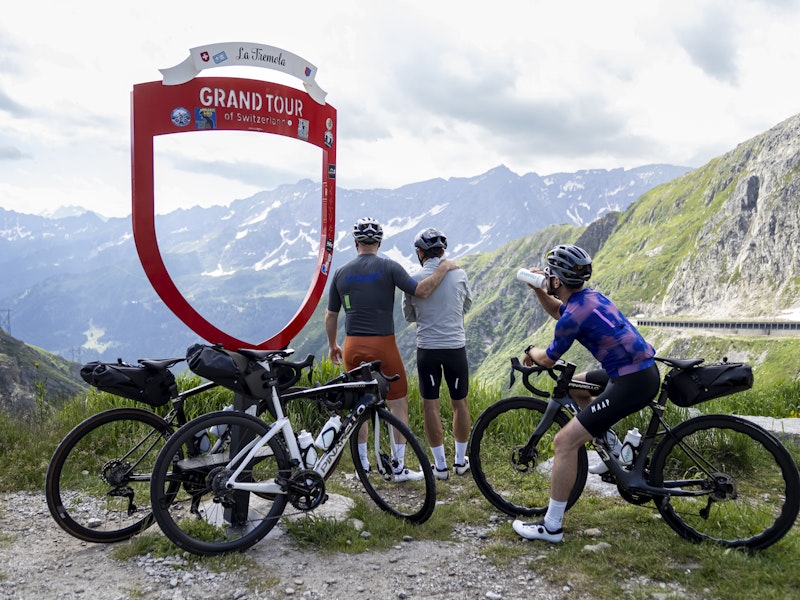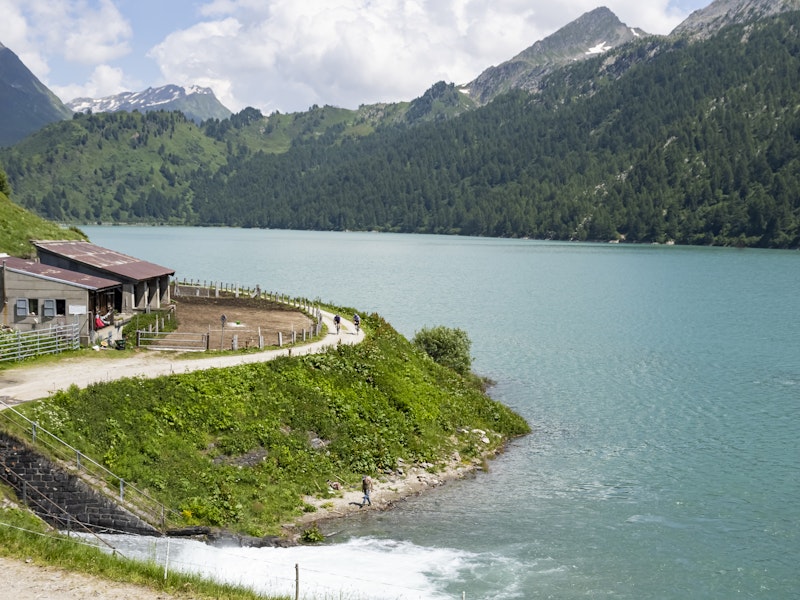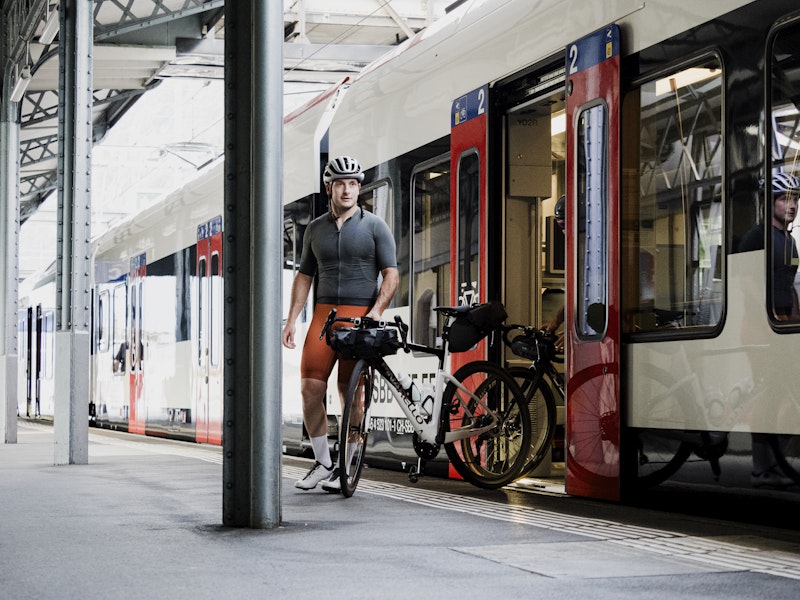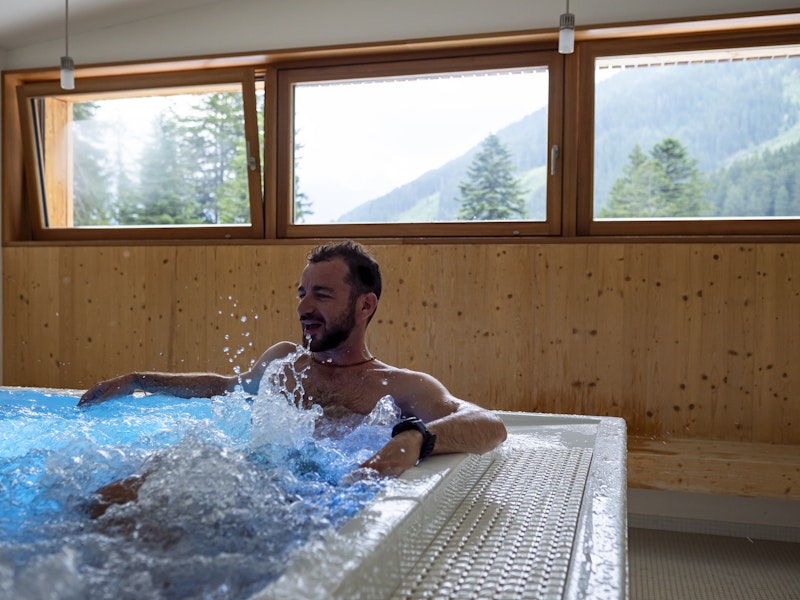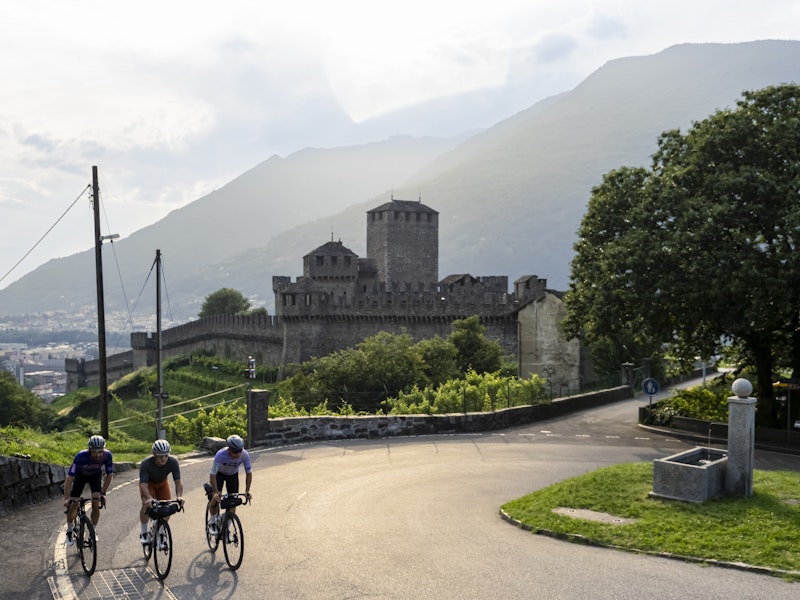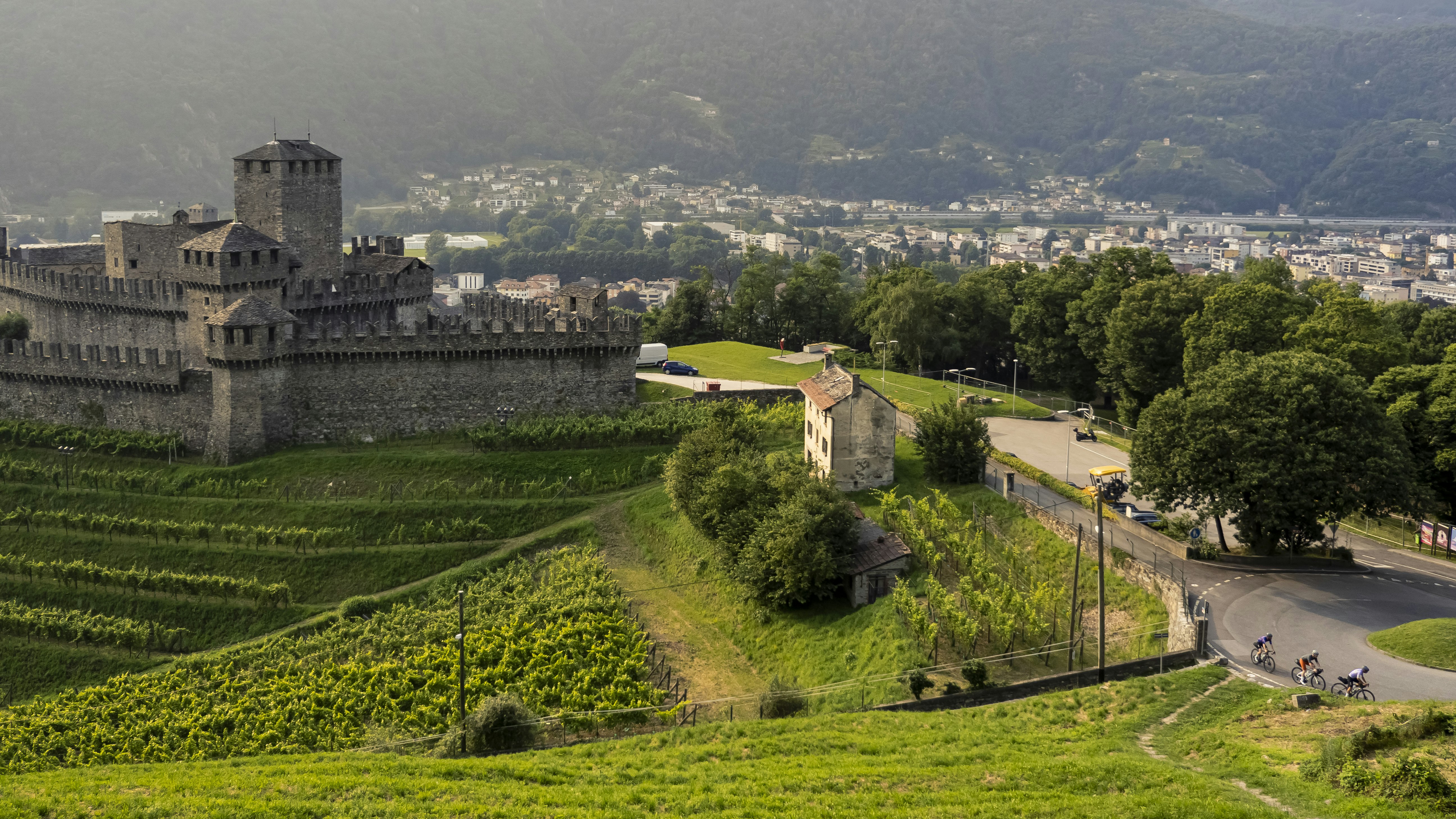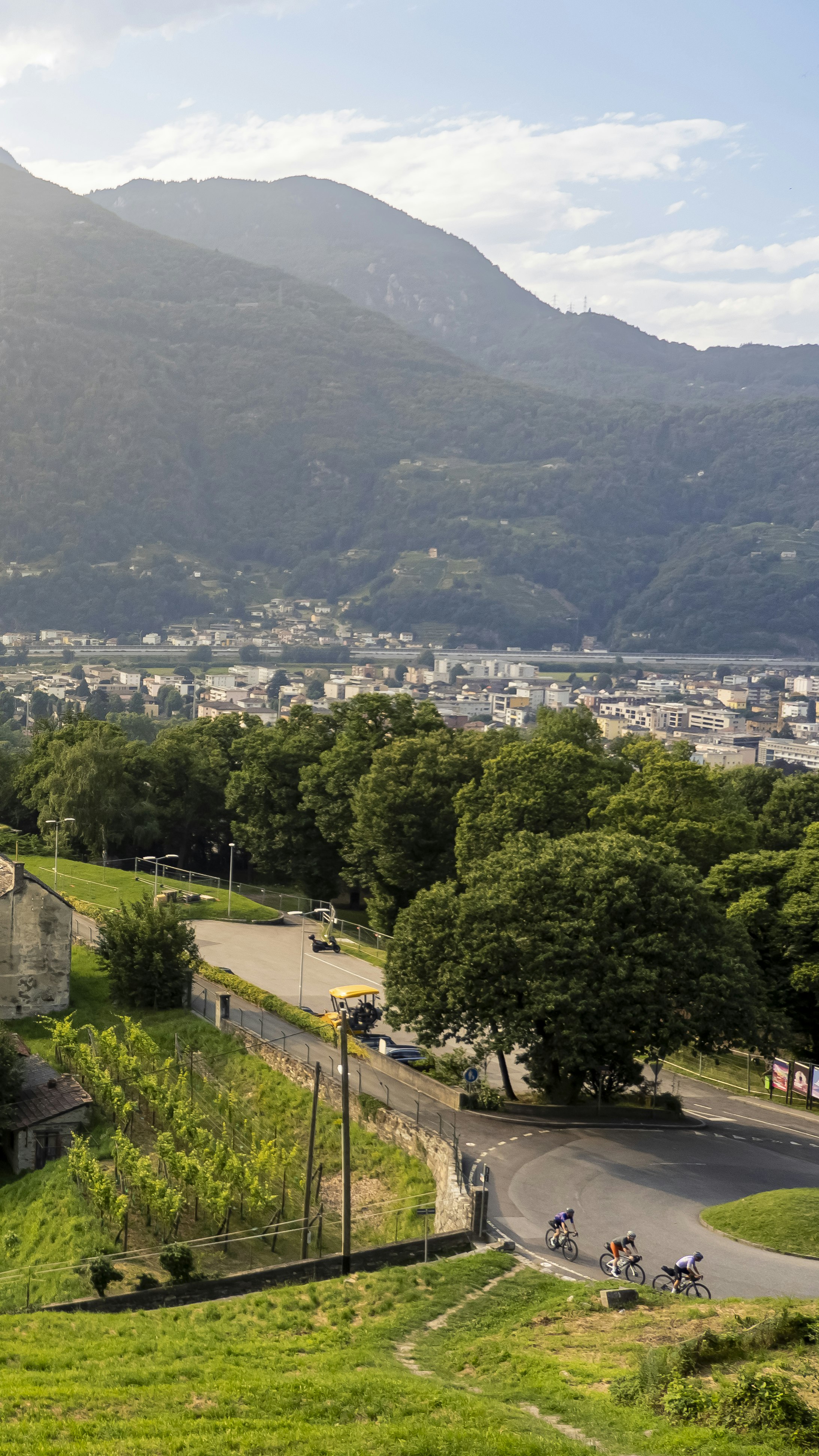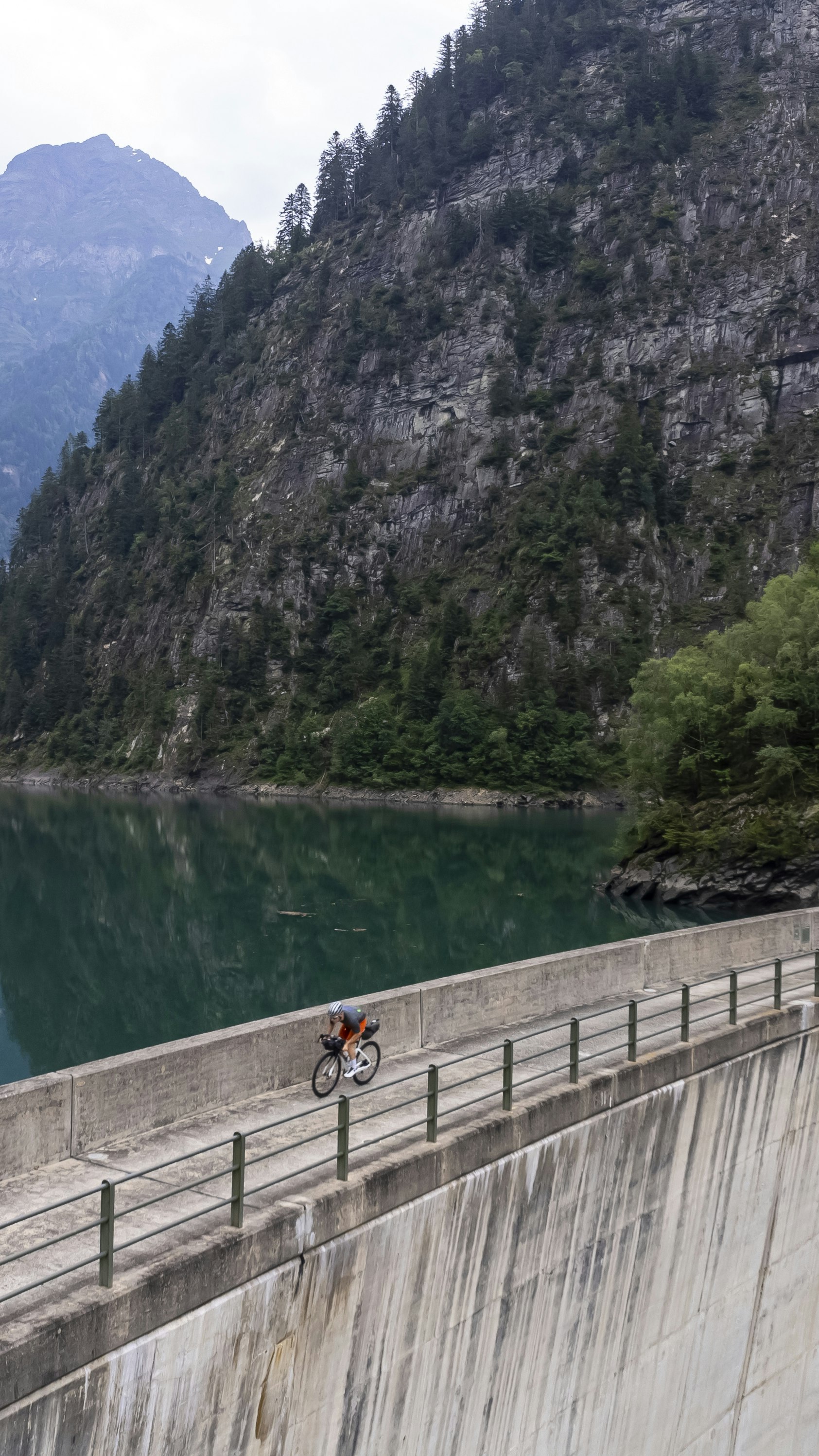
Trans-boarder climbs
It really is true that all it takes is a little curiosity to see how much there is still to discover, even in your backyard. Ticino is the best example of this.
Period
May - Oct
Elevation difference
7730 m
Total Length
328 km
Duration
3/5 Days
T
We, on the other hand, take it easy and reach the recently opened VeloCafé in the nearby Giubiasco for a cappuccino and a slice of homemade tart. During the transfer – bad luck is always lurking in these cases – I puncture a tyre: certainly better for it to have happened in town than on the arduous climbs we are about to tackle. Let's hope, however, that it's just a random accident and not the prelude to a three-day event full of glitches, since we will be relentlessly busy going up and down the Bellinzona and Valleys area. We repair the inner tube promptly and efficiently. We add the last details to our cycling attire, the necessary checks to the bare minimum we carry in our panniers, and off we go.
We cycle towards the first climb, but there’s initially about thirty kilometres of flat terrain ahead of us. Just as well, since we have legs and muscles to loosen up and brains to set on this unprecedented three days of cycling. There’s three of us, but I’m the only newcomer to Ticino. From Malvaglia we climb for eighteen kilometres to an altitude of 1,500 metres. Davide and Giona, both natives of Ticino and my companions in this adventure, know the climb and so they push on, at a good pace and at the same time managing to look around, still surprised by the scenery. Yes, because the spectacle is astounding and I am truly amazed when, at the end of a straight stretch in the woods, a giant dam comes into view, the Malvaglia Valley dam.
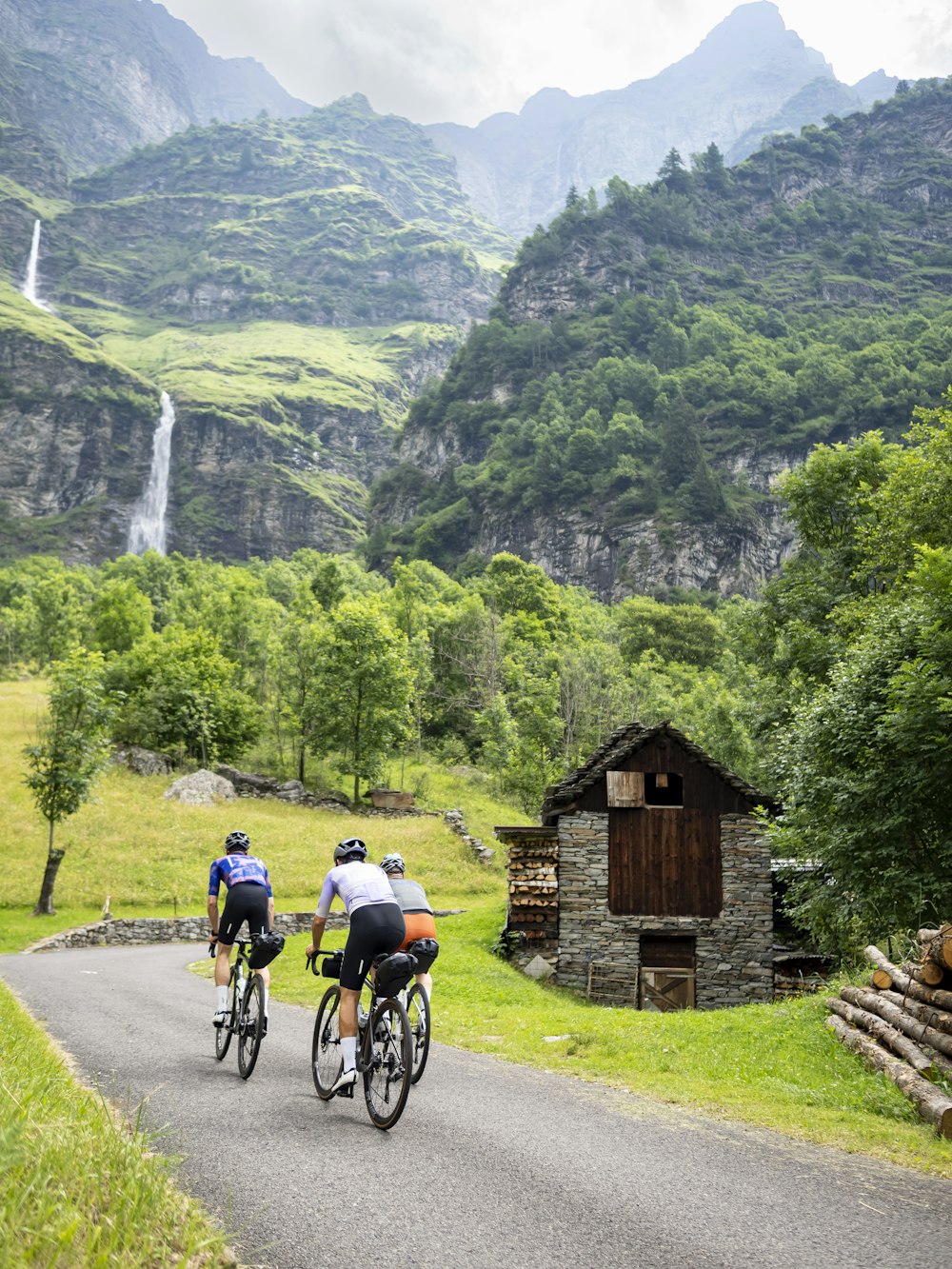
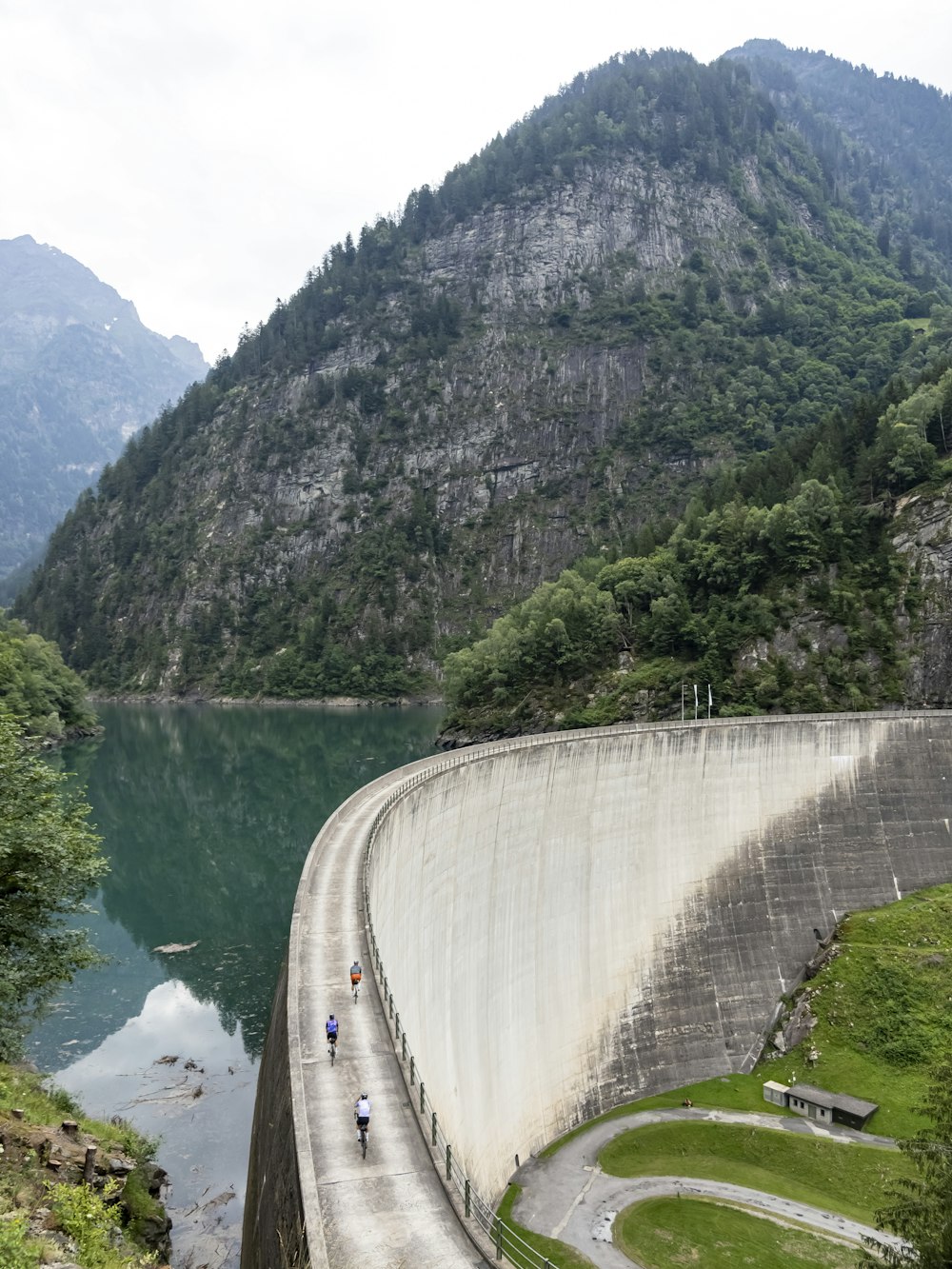
We stop right at the foot of the enormous support structure to take a break, eat an energy bar and take in our surroundings. Before continuing on the traditional ascent, we take a side road that passes above the dam. A sense of infinity pervades us, not least because a cloud suddenly makes it impossible to see beyond the enormous body of water and so our gaze is lost in the horizon as if we had the sea in front of us. We resume the climb and the hairpin bends become gentler. The road levels out and there is a stretch of dirt track. If you know how to ride your bike, you’ll easily pick up speed here, like Giona who moves with lightness and mastery, jolting smoothly through the dust. I, being more concentrated, am consequently stiffer, also because we’re using road bikes. I have a harder time, and can’t make the most of the view of Blenio valley. Luckily for me, the road turns to asphalt and the bends become sharper but there’s only a few left: here we are, finally, at the cosy Ristoro Sass Malt. We crash out onto the terrace to enjoy a beer and have the innkeeper tell us the names of all three-thousand-peaks on the horizon.
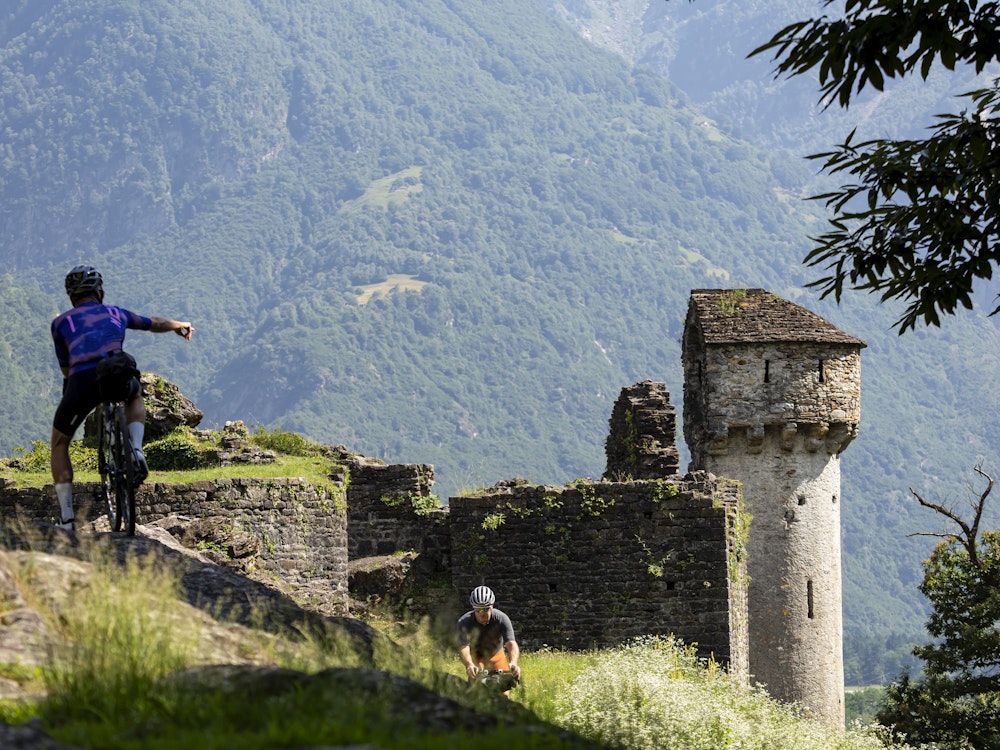
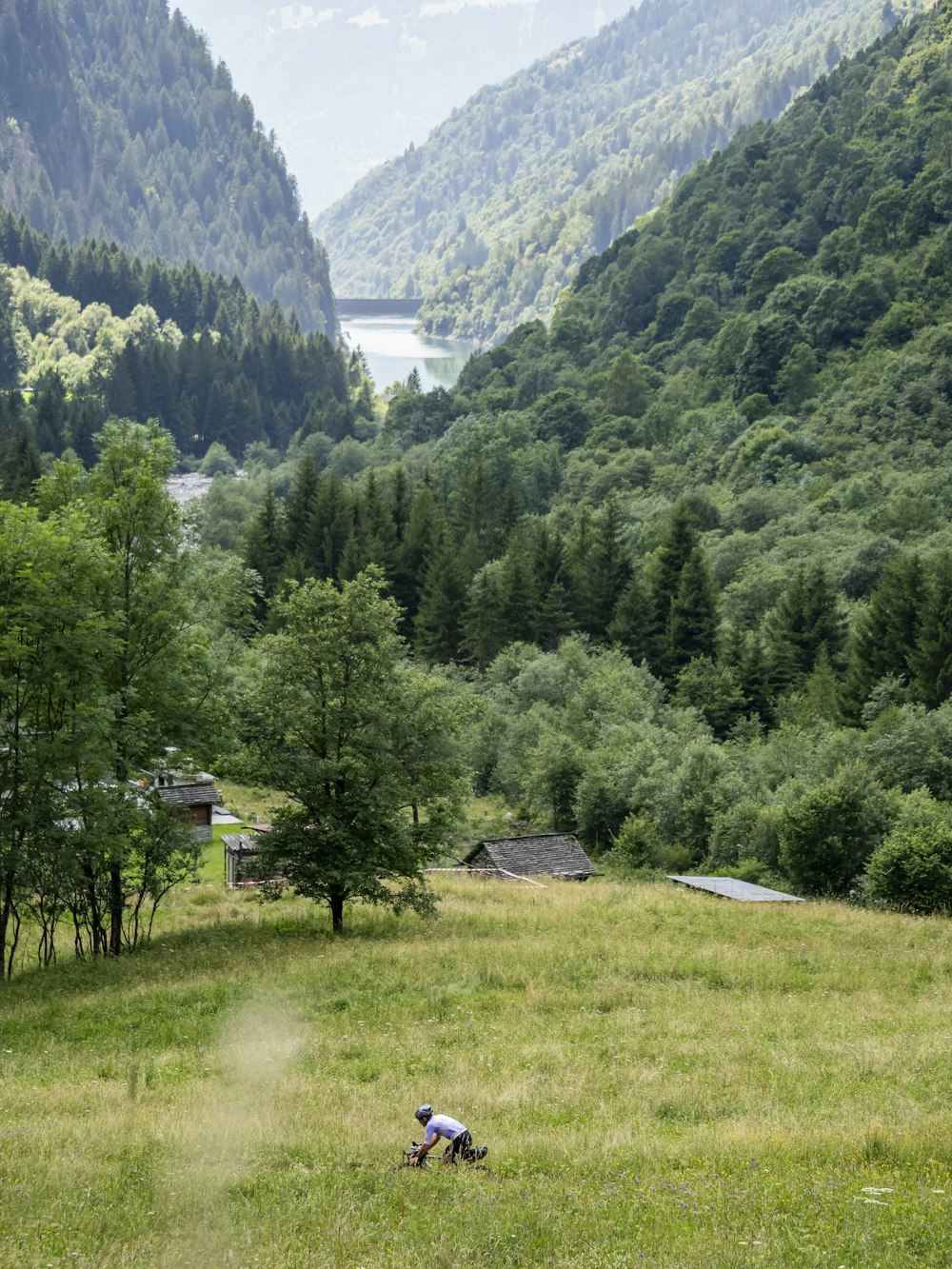
Back to ground level cycling. With the obvious exception of the main roads, a feature of the Bellinzona region is the very light car traffic. The cycle paths, which enrich and complete the area's offer also leave room for roads that are open to cars but can be cycled in total safety, also thanks to the perfect asphalt. After Torre, leaving the former Chocolate Factory Cima Norma (now Fondazione La Fabbrica del Cioccolato), we arrive in Olivone to begin a new climb: we head towards the Passo del Lucomagno. The climb is almost twenty kilometres long, but we decide not to climb on the first day. We want to experience the territory, bite into it, taste it, giving it the time it needs. ‘On this trip, the bike is like an instrument for getting to know Ticino, given how cycling is an ideal magnifying glass for observing and discovering the territory’.
Davide is right, even if it is he who then pushes the hardest on in the hilly sections that lead to the actual climb. It’s hot, but bearable. Davide opens and closes his jersey, enjoying himself as he pushes on the attack of the climb. Giona seems to caper on the pedals, almost dancing on them, and climbs nimbly. I stay on the wheel with a fixed thought hammering at me: how wonderful is Ticino, so close to home and so little known to us Italians. The second ascent is also great stuff for those who love cycling climbs, for grimpeurs, for those who prefer the solitude and the joyous suffering of cycling. We come across only one or two cars in the first few kilometres, despite the fact that the first holiday resorts and the alpine pastures have come into view.
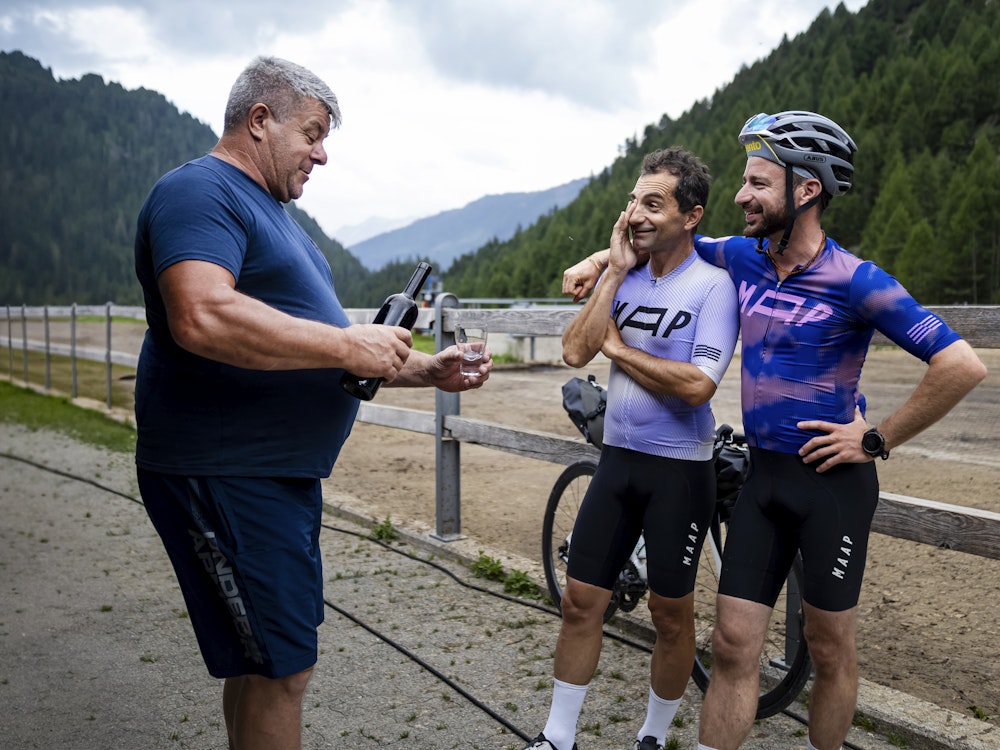
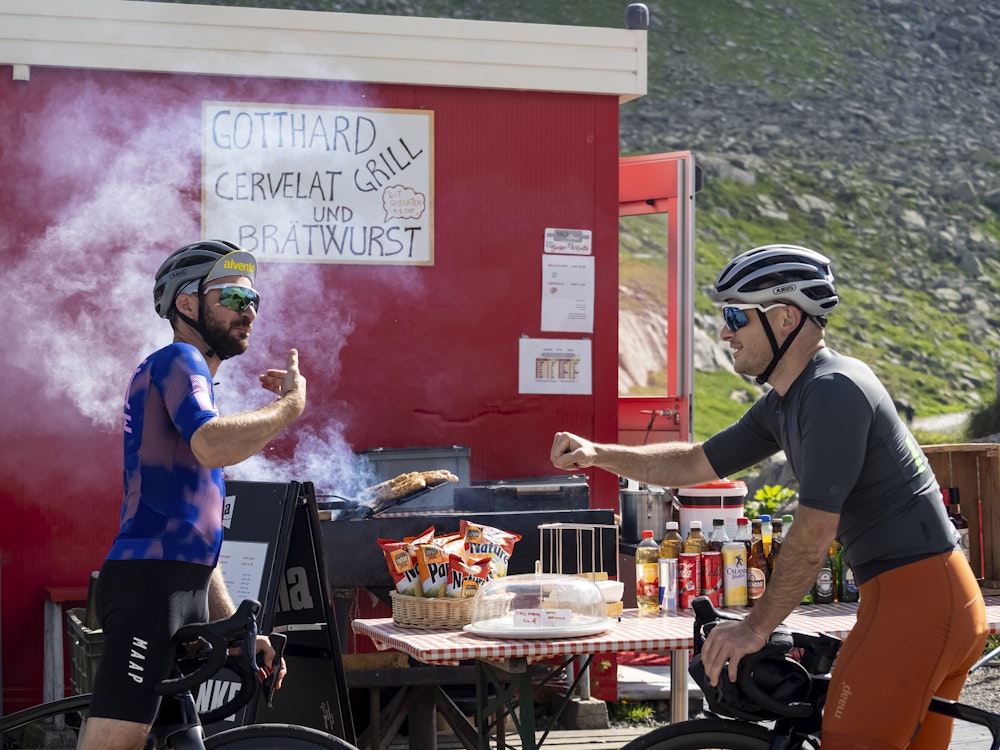
We reach the Alpe Pian Segno via a small, unpaved side road. There are still five kilometres to go to the pass, but this is enough for today. There are mountain cheeses waiting for us, along with some good red wine. And there is also some really creamy and tasty white yoghurt, which has little to do with wine, but it’s so good that who cares? We get back on the main road and stop for dinner and our first night at the Campra Alpine Lodge & Spa, located in front of a cross-country skiing ring, where we find comfort food and comfortable rooms to recover for the second day.
At 7 a.m. we are already on the trail. The air is crisp, so we put on our sleeveless jacket as soon as we leave the hotel. But then, as always, we don't need them, because the road immediately steepens and we start to sweat; a series of uphill stretches brings us to the 1,900-metre Passo del Lucomagno. Now we need to cover up, before we begin the nosedive towards the canton of Graubünden, climb up to the Oberalp Pass, and arrive in the ski resort of Andermatt in the canton of Uri. The most fascinating and certainly most anticipated point of the second day awaits us. We have to tackle the ascent of the Gotthard Pass, which will take us back to canton Ticino.
We have almost twelve kilometres to cover before reaching the 2,100-metre-high pass. The hairpin bends wind their way through two cantons: we start in Uri and then arrive, in the second half of the climb, in Ticino. The sun also accompanies us on this second day: the warmth of its rays is even more pleasant as we climb higher and the temperature drops. The hairpin bends follow one another, first in a very wide panoramic setting, then between rock walls that make the climb seem even harder, even though we are on an almost constant average slope of 6%, with only a few significant peaks. We are back in Ticino, on the toughest part of the climb with even severe segments, where the asphalt gives way to cobblestones. No unevenness in the paving, mind you, but still the terrain tends to slow us down. We cross wide patches of snow, left over from the long winter: since the road has little exposure to the sun, they don’t melt, creating a sensational scenery (and above all a wonderful temperature for cycling uphill). Davide proceeds and doesn't make a peep, despite the air being thinner. He is the first to reach the 2,106 metres of Gotthard, while Giona and I proceed two hairpins behind.
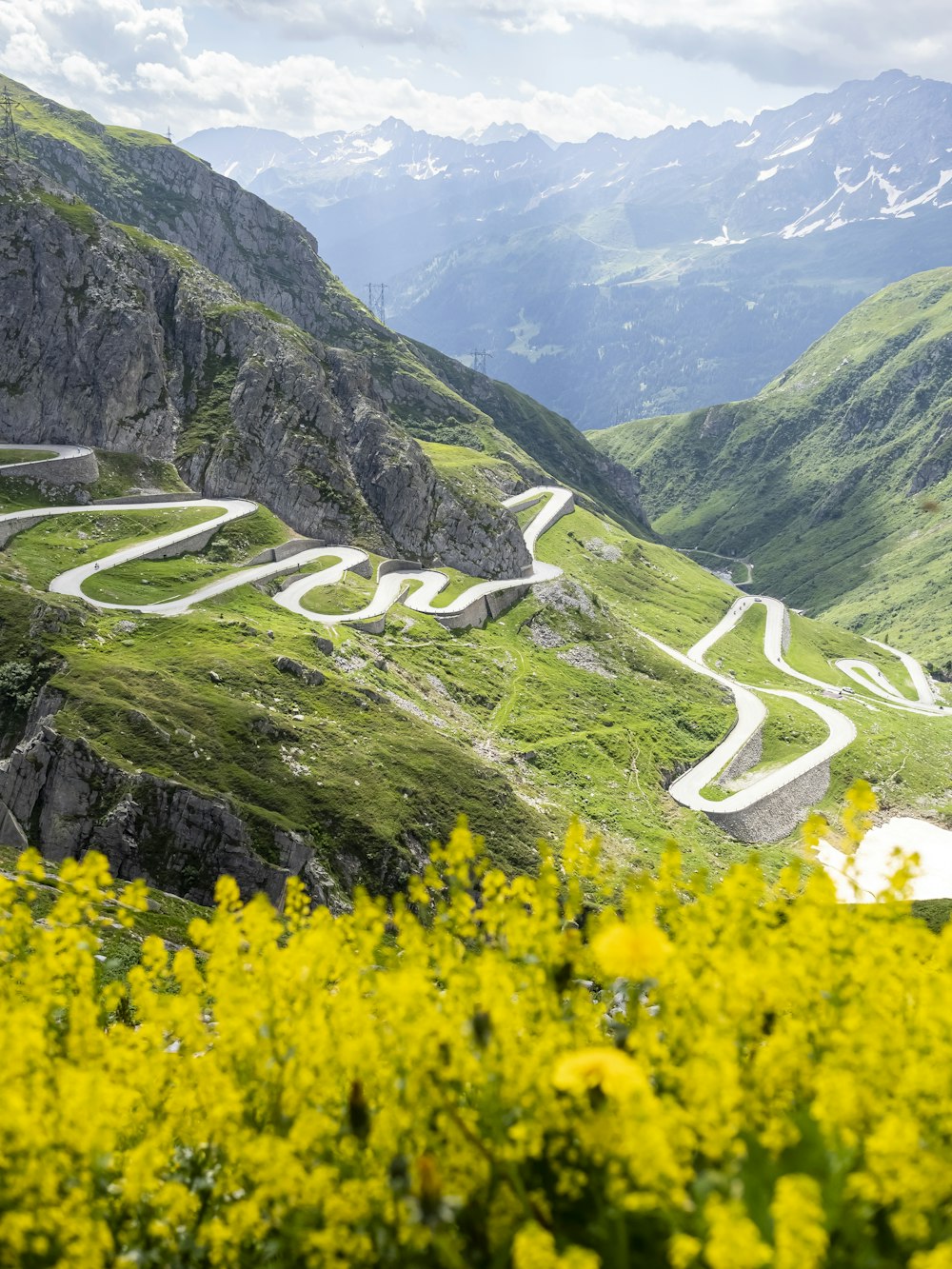
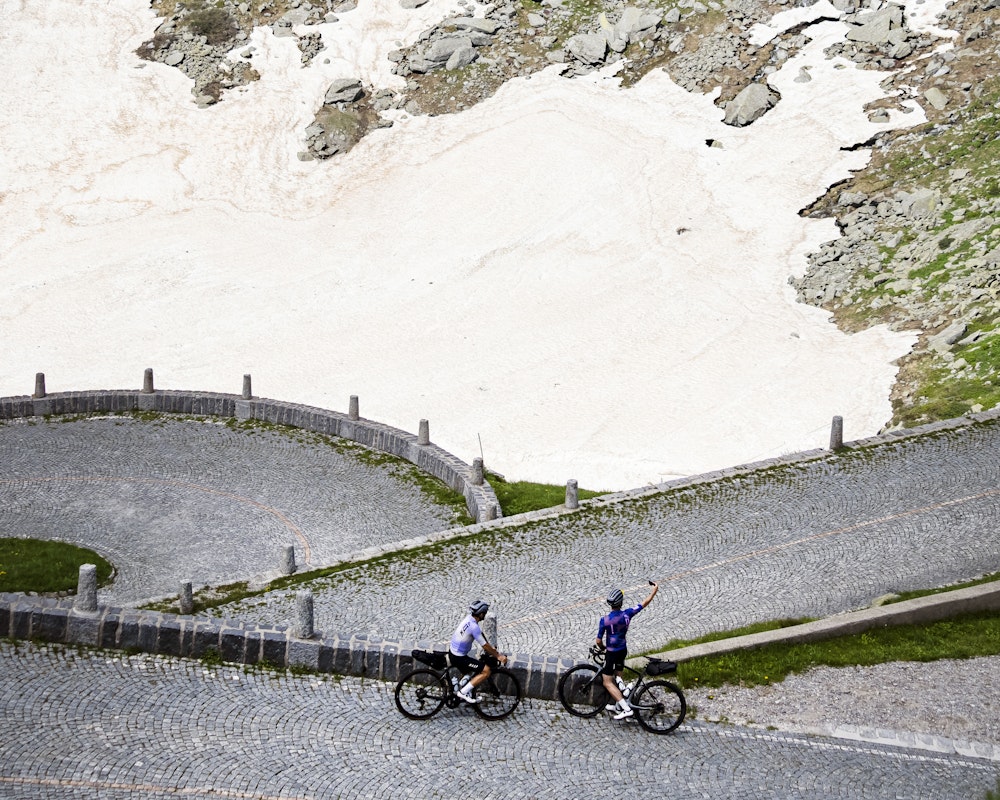
Davide fills his water bottle from a stream. The fresh air mixes with the smoke from a barbeque that smells of sausage. However, we prefer a more nutritious and light meal at the former hospice, since we still have a long way to go.
The descent is certainly atmospheric, peculiar, innovative. You can understand everything from its name: it is called Tremola [Tremble], because your arms are flapping, shaking, jerking on the cobblestones. As soon as you look out over the pass there is an initial straight section and then a series of repeated bends that quickly make you lose altitude. From above, the road appears as a stone serpentine winding down. Since we’re here for the full package, how about a good glass of wine at the Enoteca Zamberlani in Piotta, once we reach the bottom? There is also a fountain in the small hamlet of Quinto: ice-cold water is needed because it gets hot again on the plains and you have to then tackle another climb. Our direction is now Lago Ritom, 1,850 metres above sea level, although the climb still gains another hundred metres in altitude. It is just over ten kilometres and the average slope is 8% and more.
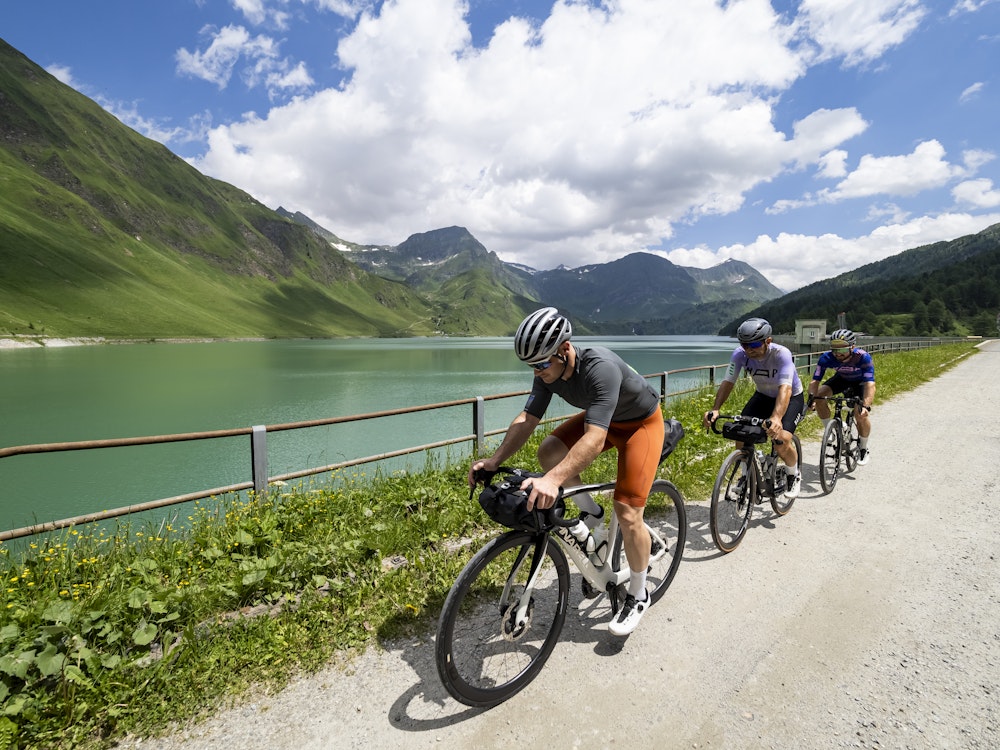
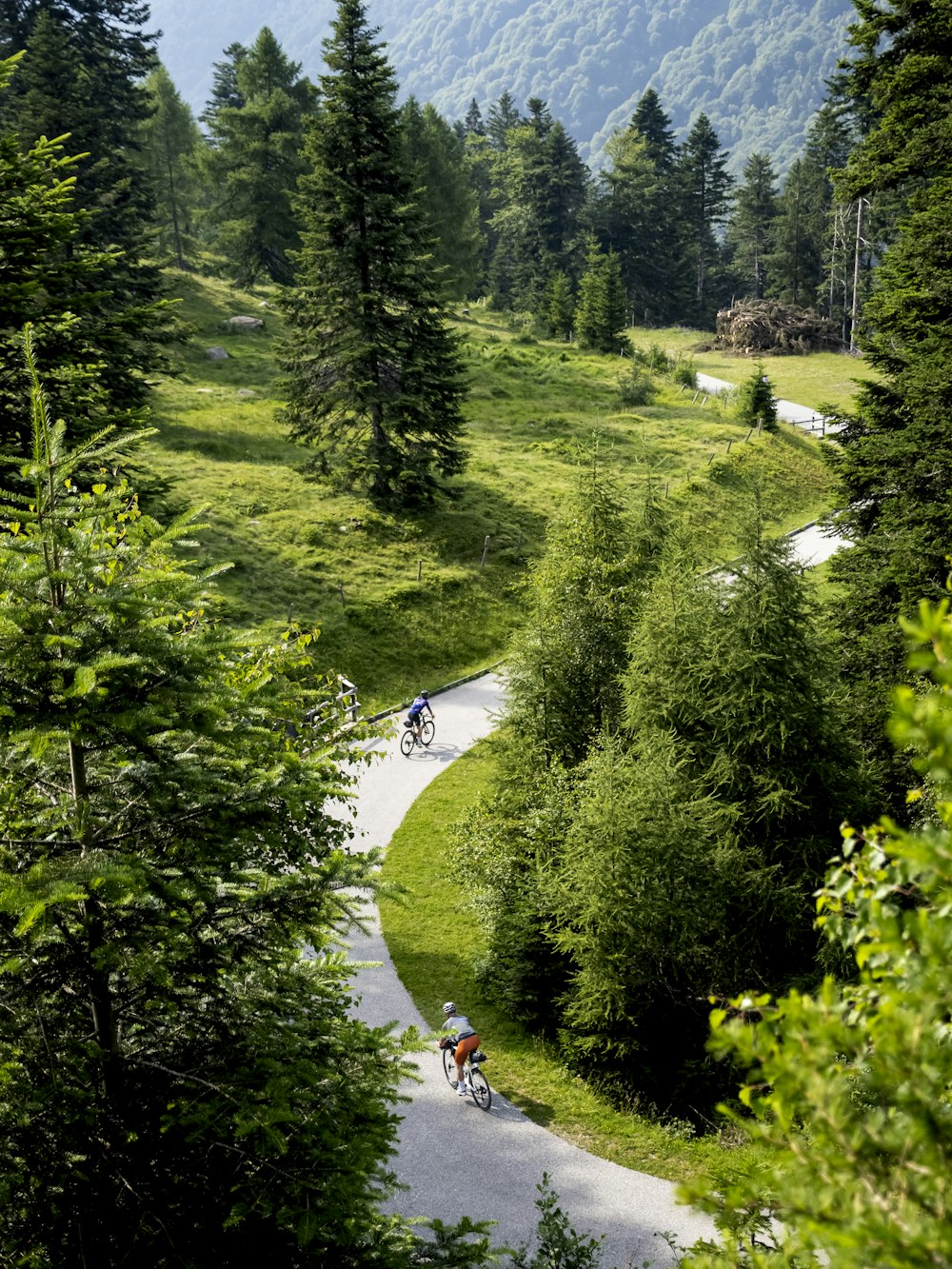
Dopo due giorni dove chilometri, valli, passi, ma soprattutto emozioni, si sono susseguiti anche troppo velocemente, nel terzo dì vogliamo tirare un po’ il fiato. Digerire, metabolizzare, fare nostro il Ticino che abbiamo esplorato. Ma, tanto per cambiare, c’è un’altra ascesa da affrontare. Veloce carico di gel al VeloCafé di Giubiasco e via, si riparte. Davide e Giona sono sulle strade di casa e mi accompagnano nell’ultima fatica del mio viaggio. Non ha tratti caratteristici alpini come quella del Gottardo, ma è decisamente la salita più completa: è quella che mi piace di più. Diciannove chilometri con una media al 7% e soprattutto una parte nel tratto centrale che alterna ghiaia a strada bianca, ma sempre pedalabile. È il terreno di Giona, che galleggia in queste condizioni e prende il largo.
Davide and Giona are on their turf and accompany me on the last ordeal of my journey. It doesn't have the characteristic Alpine features like the Gotthard, but it is definitely the most complete climb. Nineteen kilometres with an average of 7% and, above all, a part in the middle section that alternates between gravel and dirt road, but still rideable. It is Giona's ideal terrain, and he floats and takes off. Davide, more solid, gains ground on the asphalt sections where the road flattens out and he manages to build speed. Lucky them for finding their challenge, while personally I’m actually suffering a little today, but I’m still psyched up for being immersed in the silence of the Morobbia Valley. Once we reach the top, we decide to descend immediately and head for Bellinzona, the capital of the canton. We can’t miss out on the castles, of which there are three though they look like a single fortress. Part of the UNESCO World Heritage, since the year 2000, they are a group of fortifications that are alive with cultural and culinary events all year round. It is easier to explore them by bike, and the little roads that climb up to them start right from the centre of town. Castel Grande first, Montebello next and Sasso Corbaro last, where we enjoy a risotto, the sunset and the typical peace and quiet. Giona was right when he whispered to me at the station: ‘You’ve no idea where we’re about to take you’.
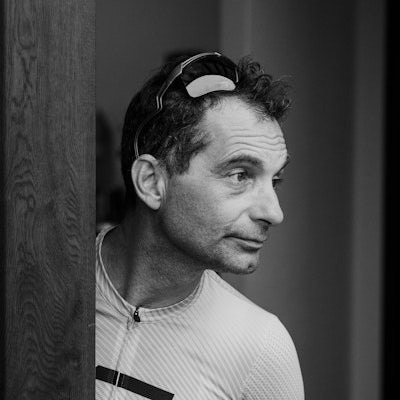
Texts
Gabriele Pezzaglia
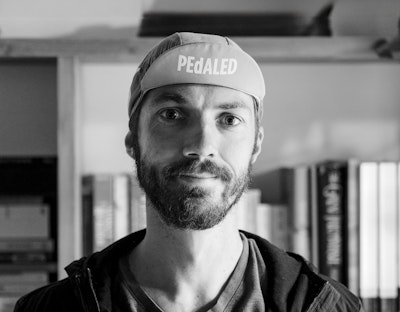
Photos
Edoardo Frezet
Cycled with us
Davide Antognini, Giona Sgroi
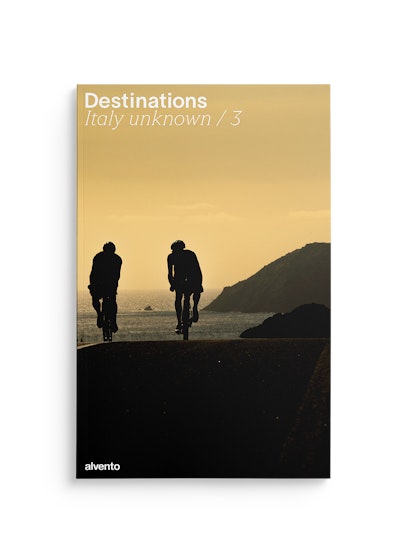
This tour can be found in the super-magazine Destinations - Italy unknown / 3, the special issue of alvento dedicated to bikepacking. 9 little-trodden destinations or reinterpretations of famous cycling destinations.
